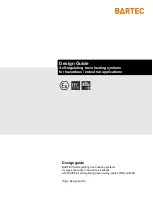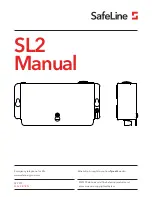
MLA System
USER GUIDE
MLA System
User Guide V2.1
73
…
…
…
…
of the four inputs or ten outputs from the Merlin controller which is supporting the network. A VU Meter displays the input level
prior to any internal processing, useful as an indicator of inappropriate levels from the signal source feeding the system.
There are then 10 bands of parametric EQ, a high pass filter and a gain control that are accessible for user adjustment of the
response. The array can be divided into up to six zones so that different EQ can be applied to different areas of the system.
Each band of parametric may be Peak, 2
nd
order Low Shelf or 2
nd
order High Shelf. Filter bandwidth may be adjusted from a Q of
0.4 up to 126 and gain may be adjusted b15dB and -30dB.
The high pass filter can be either a Butterworth at 6, 12, 18, 24 or 48dB/Octave, Bessel at 12 or 18 dB/Octave or Linkwitz Riley at
either 12, 18, 24 or 48dB/Octave. Frequency is adjustable from 10Hz to 300. Finally gain may be adjusted from +15dB to -40dB.
There is a post EQ VU meter for each of the zones to ensure that over-zealous EQ hasn’t done anything too drastic to system
headroom.
The signal is then fed to each of the five cells where further parametric EQ, an IIR all pass filter, high and low pass filters, FIR
filters, delay, gain, phase and limiting. The parameters for this extensive processing are created using Display 2.1 and uploaded
to the system via the U-Net network using Vu-Net software.
Finally, each cell has an amplifier tailored to the requirements of the driver(s) being driven. This adds 38dB of gain. The output
of the amplifier is fed back to the limiter to provide the best possible protection to each drive unit.
There are temperature sensors checking the temperature of the DSP and each individual cell amplifier. Finally each cell output
is displayed on a VU Meter.
Essential Maintenance
Coming Soon
Replacing the amplifier module
There is no need to remove a cabinet from an array to replace a module if you can safely access the rear of the MLA Compact
speaker, the module can be replaced in situ. Disconnect all power, audio and network connections from the module. Undo all
M5 Countersunk screws holding the rain cowl assembly with the appropriate size hex head driver. Once the rain cowl is removed
the module can be eased out of the cabinet, there are no additional screws holding it in place. Once you have removed it
sufficiently to access the connections disconnect both Speakon NL8's and remove the module. Fitting the replacement is a
Summary of Contents for MLA
Page 1: ...User Guide Multi cellular Loudspeaker Array MLA ...
Page 115: ...MLA System USER GUIDE MLA System User Guide V2 1 115 ...
Page 117: ...MLA System USER GUIDE MLA System User Guide V2 1 117 ...
Page 152: ...MLA System USER GUIDE MLA System User Guide V2 1 152 This is the response on the ceiling ...
Page 215: ...MLA System USER GUIDE MLA System User Guide V2 1 215 ...
Page 258: ...MLA System USER GUIDE MLA System User Guide V2 1 258 ...
Page 413: ...MLA System USER GUIDE MLA System User Guide V2 1 413 ...
Page 420: ...MLA System USER GUIDE MLA System User Guide V2 1 420 ...
Page 421: ...MLA System USER GUIDE MLA System User Guide V2 1 421 ...
Page 438: ...MLA System USER GUIDE MLA System User Guide V2 1 438 ...
Page 440: ...MLA System USER GUIDE MLA System User Guide V2 1 440 ...
Page 447: ...MLA System USER GUIDE MLA System User Guide V2 1 447 ...
Page 454: ...MLA System USER GUIDE MLA System User Guide V2 1 454 ...
Page 455: ...MLA System USER GUIDE MLA System User Guide V2 1 455 The finshed 6 box ground stack system ...
















































